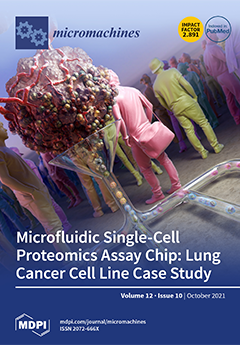In this work, we propose exchange-coupled-composite-bit-patterned media (ECC-BPM) with microwave-assisted magnetic recording (MAMR) to improve the writability of the magnetic media at a 4 Tb/in
2 recording density. The suitable values of the applied microwave field’s frequency and the exchange coupling between magnetic
[...] Read more.
In this work, we propose exchange-coupled-composite-bit-patterned media (ECC-BPM) with microwave-assisted magnetic recording (MAMR) to improve the writability of the magnetic media at a 4 Tb/in
2 recording density. The suitable values of the applied microwave field’s frequency and the exchange coupling between magnetic dots,
Adot, of the proposed media were evaluated. It was found that the magnitude of the switching field,
Hsw, of the bilayer ECC-BPM is significantly lower than that of a conventional BPM. Additionally, using the MAMR enables further reduction of
Hsw of the ECC-BPM. The suitable frequency of the applied microwave field for the proposed media is 5 GHz. The dependence of
Adot on the
Hsw was additionally examined, showing that the
Adot of 0.14 pJ/m is the most suitable value for the proposed bilayer ECC-BPM. The physical explanation of the
Hsw of the media under a variation of MAMR and
Adot was given. Hysteresis loops and the magnetic domain of the media were characterized to provide further details on the results. The lowest
Hsw found in our proposed media is 12.2 kOe, achieved by the bilayer ECC-BPM with an
Adot of 0.14 pJ/m using a 5 GHz MAMR.
Full article






